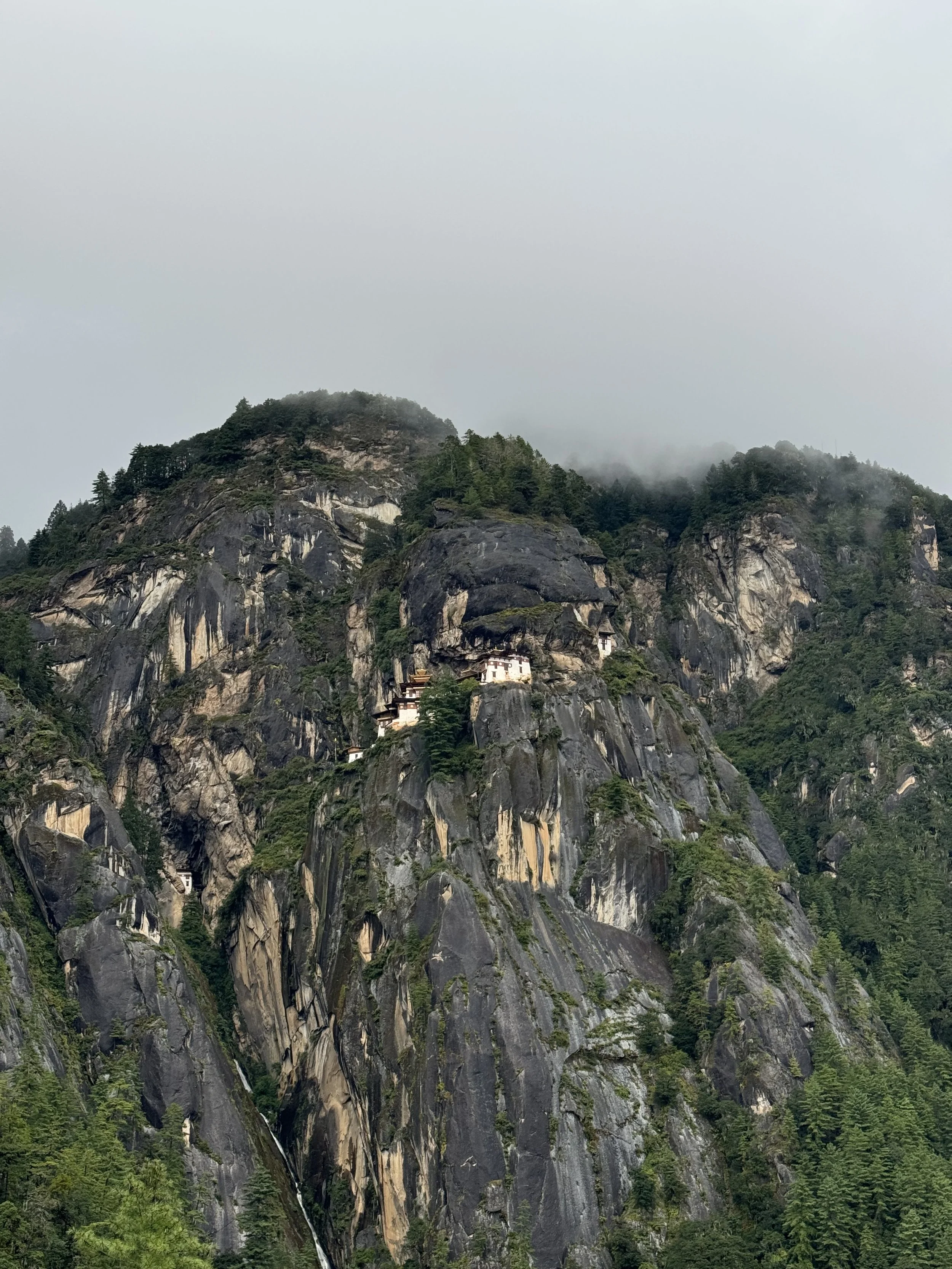Finding Stillness in the Land of Thunder Dragon: Ancient Bhutanese Mindfulness Practices for Modern Life
Honored to speak at the Innovation Forum hosted by His Majesty in Bhutan
The Himalayan kingdom of Bhutan has long been renowned for prioritizing Gross National Happiness over Gross National Product. Last year, I was honored with an invitation from the Royal House of Bhutan to speak at their Innovation Forum on mindful leadership, an experience that would profoundly reshape my understanding of presence and purpose.
When dawn breaks over the Paro Valley, the first rays of sunlight ignite the prayer flags strung across ancient dzongs, sending wishes of compassion across the mountain air. It was in this setting, where spirituality is woven into the very fabric of daily life, that I found myself seated cross-legged beside my new friend Karma, the architect of Bhutan's famous Gross National Happiness framework.
I discovered that Bhutan's approach to mindfulness isn't merely a wellness trend, it's a centuries-old philosophy that has sustained this kingdom through isolation and modernization. The practices I encountered there, particularly around non-attachment, offered a profound antidote to our culture of constant striving.
Ancient Wisdom for Modern Minds
"There's nothing worse than being in a beautiful place but being distracted," remarks meditation instructor Aditi Shah in a sentiment that echoed throughout my Bhutanese journey. In a world where our attention is increasingly fragmented, the techniques I learned in Bhutan's monasteries and mountainsides provide a path back to presence.
The most transformative practices I encountered were deceptively simple, yet when integrated into daily life, they create profound shifts in well-being. Below, I share three techniques that have continued to sustain me long after returning from the Kingdom of the Thunder Dragon.
In the photo is Karma Tshiteem
Chöying Meditations: Finding Sanctuary in Nature
High in the Himalayan foothills, I joined local monks for their morning practice of Chöying meditation, a tradition inspired by Bhutan's sacred landscapes. As we sat in a meadow dotted with blue poppies, my guide demonstrated how even fleeting connections with nature can anchor us to the present moment.
"In Bhutan, we believe nature is not something separate from us," explained Karma. "When you truly observe a flower or listen to water, you remember your place in the world."
The practice involves spending 10-15 minutes daily in deliberate communion with natural elements, synchronizing your breath with your steps (inhale for four steps, exhale for six) during walking meditation, and offering gratitude to the natural world. The phrase taught to me, "I am part of this earth", has become my daily mantra during morning walks through Manhattan's Central Park, a world away from Bhutan but connected through intention.
For urban dwellers, Karma suggests focusing on houseplants or the sky visible from your window, even brief moments of natural connection can reset your nervous system and perspective.
Practice of non attachment
Lü Sem: The Body as Anchor
"The body never lies," an elderly teacher told me at Chagri Dorjeden Monastery, where I participated in their Vipassana training. "When the mind wanders, return to the body."
In the cool predawn hours, I joined practitioners in the Lü Sem technique, a body-scanning meditation that begins at the toes and moves systematically upward, noting sensations without judgment. The practice concludes with loving-kindness phrases that I still repeat daily: "May I be safe. May I be peaceful."
What distinguishes this practice is its adaptability to modern life. During my stay, I watched government officials pause for three conscious breaths before important meetings and taxi drivers check in with their breath at red lights. "Small moments of awareness create a life of presence," explained my teacher.
Upon returning home, I've integrated this practice into my daily commute, using subway stops as meditation bells that call me back to my breath, and implemented a simple 3-breath reset between meetings. The results have been remarkable, particularly in maintaining equanimity during challenging conversations.
Thukdam: Compassion as Practice
Perhaps the most distinctive element of Bhutanese mindfulness is its emphasis on collective well-being. In a culture where monastery bells ring to remind everyone to consider others' happiness, I learned the Thukdam practice, a compassion-centered approach rooted in Bhutan's Gross National Happiness philosophy.
During a community ceremony in a remote village, I watched as participants journaled responses to two powerful questions: "How did I show kindness today?" and "How can I ease another's suffering tomorrow?" This was followed by the transformative tonglen practice, where one visualizes inhaling others' suffering and exhaling relief.
"Happiness is not individual in Bhutan," Karma explained. "Like breathing, we give and receive continuously from each other."
I've found the morning intention-setting aspect of this practice particularly powerful in my leadership role. Beginning each day by identifying one small act of kindness has rippled outward in ways I never anticipated, creating what Karma would call "merit that multiplies."
Bringing Bhutan Home
Tiger's Nest Monastery
As I reflect on these practices from my New York apartment, where a small prayer flag now hangs beside my window and a Bhutanese singing bowl sits on my desk, I'm reminded of a phrase Karma shared with me during our goodbye: "Gha mey pa, dey mey", without beginning, without end. The path of mindfulness isn't a destination but a continuous journey of returning to what matters.
The beauty of these Bhutanese practices lies in their simplicity and adaptability. Begin with just five minutes daily of any technique that resonates. Anchor your practice to existing habits, perhaps a moment of nature connection with your morning coffee or breath awareness while brushing your teeth. Use visual reminders (I keep a photo of Bhutan's Tiger's Nest Monastery as my phone background) and celebrate small victories of consistency.
As I explained during my talk at the Innovation Forum, mindful leadership begins with mindful living, a lesson Bhutan has perfected over centuries while much of the world races toward an uncertain future. In the words shared with me by a 93-year-old farmer as we watched the sunrise paint the mountains: "When you are fully here, every moment becomes enough."




